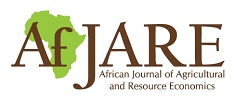Does the inverse farm size productivity hypothesis hold for perennial monocrop systems in developing countries? Evidence from Kenya
Josiah Ateka, Perez Ayieko Onono-Okelo & Martin Etyang
Abstract
The inverse farm size and productivity relationship (IR) is a recurring theme in the literature. However, most previous studies were undertaken within a setting of mixed cropping systems. In this article, we investigate the effect of farm size on productivity within the context of a perennial mono-cropping system, acute competition for farmland, frequent subdivision of farms and declining yields. We apply household survey data of smallholder tea farms in western Kenya and consider both technical efficiency (TE) and the yield per hectare as indicators of productivity. The findings show that the effect of farm size on productivity is nonlinear, with TE initially declining and then rising with farm size. The findings also demonstrate that the farm size and productivity relationship is important for perennial monocrops and that the use of robust measures of productivity is important for the IR. The findings have important implications for agricultural policy in developing countries.
